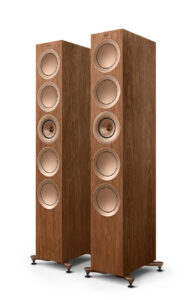
A reader question on The Absolute Sound’s Substack newsletter asked us to explain the technical basis of grounding devices such as the Shunyata Altaira I reviewed in Issue 334. The writer cited a website that he called a “credible audio source,” which claimed grounding devices made no sonic difference. Indeed, the website ridiculed the category. He asked us to “rebut the criticism from the naysayers.”
I’ve long since learned to ignore critics who dismiss the audibility of a phenomenon purely on a primitive theoretical understanding of the “scientific high ground.” It’s not incumbent upon us to “prove” to the skeptics that a particular product renders an audible difference. Even if you can show, say, a lower noise floor, the anti-audiophile brigade dismisses such an improvement as beyond human hearing. These naysayers are not impartial seekers of truth but rather partisan combatants. They dismiss the observations of critical listeners without listening themselves, invoking the false claim that they have science on their side.
Audio history is filled with example after example of phenomena that were ridiculed only to be later proven, with scientific certainty, to be real and audible. Critical listeners, who trust their ears, don’t need measurements or conformity with incomplete theory to validate their personal experiences.
For just one example, the idea that the digital interface between a source and DAC could introduce an analog-like variability in the sound was once dismissed as the height of audiophile lunacy. It is incontrovertible that all interface types transmit the data without error; it was an article of faith that if the ones and zeros are the same, the sound is the same. But a few years after the first reports of audible differences between interfaces, the precise electrical phenomenon that introduced that variability was revealed—in granular technical detail—in a peer-reviewed paper written by respected academics (Journal of the Audio Engineering Society, “Is the AES/EBU and SPDIF Interface Flawed” by Malcolm Hawksford and Chris Dunn). Today, interface jitter is universally accepted as the source of variability in the sound quality of digital interfaces.
I’m reminded of the quote by the great audio thinker Richard Heyser: “One of the most belittling experiences is to deride the ‘black art’ of a craftsman who gets consistent results by a certain ritual which he cannot explain and then to discover that his actions in fact held a deeper technical significance than we understood from our simplified model.”
Another expression of this observation comes from Michael Polanyi’s influential 1958 book Personal Knowledge: Towards a Post-Critical Philosophy: “Whenever connoisseurship is found operating within science or technology, we may assume that it persists only because it has not been possible to replace it by a measurable grading.”
I wrote a 12,000-word Audio Engineering Society paper (and presented it at the 1991 New York Convention) on this subject. It’s called “The Role of Critical Listening in Evaluating Audio Equipment Quality,” but it could have easily been called “The Audiophile’s Manifesto.”
As for the efficacy of grounding products, I advised the reader that he should discover for himself whether they make a difference. Simply visit a Shunyata dealer and have him demonstrate the Altaira system. Make up your own mind based on firsthand listening experience, not on the say-so of some self-proclaimed “scientific expert” with an agenda.
For the record, I provided a detailed technical description of how grounding products work in my review of the Altaira. You can also watch my video interview with Shunyata founder Cailin Gabriel on our YouTube channel.
I’ll share with you an interesting story about the Altaira. A distributor recently visited with power amplifiers for me to review. We first listened to the system with my reference CH Precision M10 amplifiers and then connected his amplifiers. When we switched amplifiers, I neglected to move the Altaira’s ground cables from the CH Precision to the new amplifiers.
After about two hours of listening to the new amplifiers, it occurred to me that I should connect the newly installed amps to the Altaira. When we listened to the new amplifiers with the Altaira, the visitor, who had no previous experience with a grounding product, was shocked at the improvement. We didn’t go back and forth, listening to different music trying to discern a difference. The sonic improvement was instantly audible and unmistakable.
My final advice to the reader with the question about grounding devices? Don’t listen to the naysayers. Don’t even listen to me. Rather, audition a grounding product yourself and reach your own conclusions. There’s absolutely no substitute for firsthand listening experience. As Linn Products’ founder Ivor Tiefenbrun famously said, “If you haven’t heard it, you don’t have an opinion.”

By Robert Harley
My older brother Stephen introduced me to music when I was about 12 years old. Stephen was a prodigious musical talent (he went on to get a degree in Composition) who generously shared his records and passion for music with his little brother.
More articles from this editorRead Next From Blog
See all
An Immersive Masterpiece
- Jul 01, 2025

The Physics of Describing Music Reproduction
- Jun 10, 2025

Detailed Frequency Ranges of Instruments and Vocals
- Jun 05, 2025

















